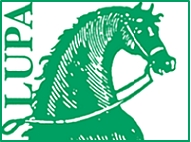Stables for horses should be located in well-drained sites accessible in all kinds of weather. They should use prevailing winds in warm weather, and be protected against winter storms. They should not be unhealthy, or a nuisance to the neighbourhood by way of smells, noise or flies. Finally, we advise they should be accessible from a paved road, and be supplied with electricity, water and telephone.
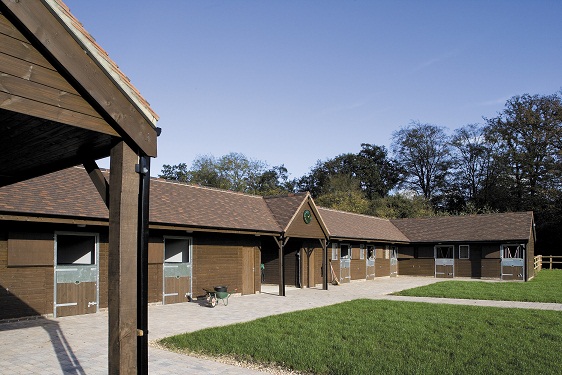 A stable should be a pleasant workplace, functionally designed to facilitate movement, distribution and cleaning. Fundamental aspects when designing them are aesthetics, ventilation, security, consistency and flexibility. The aesthetics of a stable block say a lot about its owners; proper ventilation is essential for horses. Inadequate ventilation, excessive heat or humidity causes condensation and smells. By ‘security’ we mean for both the animals and their carers; ‘consistency’ because horses pass long boring hours by a stable wall, and could abuse it by kicking, biting and scratching. By ‘flexibility’ we mean mounting a design that easily allows for successive enlargement.
A stable should be a pleasant workplace, functionally designed to facilitate movement, distribution and cleaning. Fundamental aspects when designing them are aesthetics, ventilation, security, consistency and flexibility. The aesthetics of a stable block say a lot about its owners; proper ventilation is essential for horses. Inadequate ventilation, excessive heat or humidity causes condensation and smells. By ‘security’ we mean for both the animals and their carers; ‘consistency’ because horses pass long boring hours by a stable wall, and could abuse it by kicking, biting and scratching. By ‘flexibility’ we mean mounting a design that easily allows for successive enlargement.
The design of a stable block differs according to intended use, and the climactic conditions in the district. Stalled horses often receive more individual attention from carers than in a field. There is more control over the horses’ eating habits; they stay cleaner, and easier to work with, which leads inevitably to better health. This is especially important with stallions and young horses.
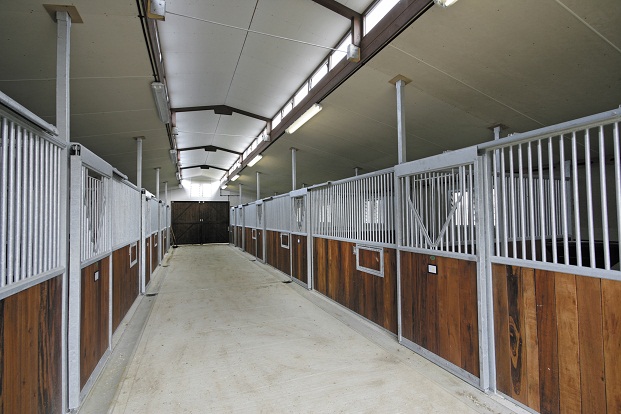 Sometimes flocks of mares are kept together with their foals in draughty warehouses. Occasionally blocks are managed without proper separation or fences. Typically, stables are built in one of two ways: as an individual stable or an ‘American barn’. Individual stables are of the traditional type – in the form of an L or U, or as a patio. This is also the preferred construction at racecourses, for reasons of privacy, security or independence. American barns are usually found at studs, clubs, establishments with large numbers of animals, where daily work under cover can be achieved.
Sometimes flocks of mares are kept together with their foals in draughty warehouses. Occasionally blocks are managed without proper separation or fences. Typically, stables are built in one of two ways: as an individual stable or an ‘American barn’. Individual stables are of the traditional type – in the form of an L or U, or as a patio. This is also the preferred construction at racecourses, for reasons of privacy, security or independence. American barns are usually found at studs, clubs, establishments with large numbers of animals, where daily work under cover can be achieved.
Both types of design, individual or American can be built with traditional building materials; concrete blocks or brick, but there is a wide range of pre-fabricated external boxes and interior partitions for warehouses. All building materials have their pros and cons when it comes to horses. Concrete is too hard for them, and linings must be added to prevent injury; blocks crack easily under the force of a kick, and uniformity must be achieved by covering sharp edges attractively. The timber used in ready-built constructions cannot be soft wood, most susceptible to gnawing.
Tamaño idóneo de las Cuadras
The size of the stable block depends on the type of horse kept inside it, and the period of time they will be locked in. Usually the size is 3X3m., allowing sufficient movement even to a larger horse. 3.25 Olympic by 3.25m. is also common. There are others such as 3X5 or 3X6m. However, we must say that 3X3 metres is fine for the majority of horses. Larger horses do need larger boxes. Farrowing crates containing the mare and a newborn foal for a few days should also be larger, at least 4X5m., and be especially warm and protected. Corridors in blocks should measure a minimum of 3 metres to allow for convenient passage for both animal and machinery, and the work associated with the keeping of animals.
Stable Walls
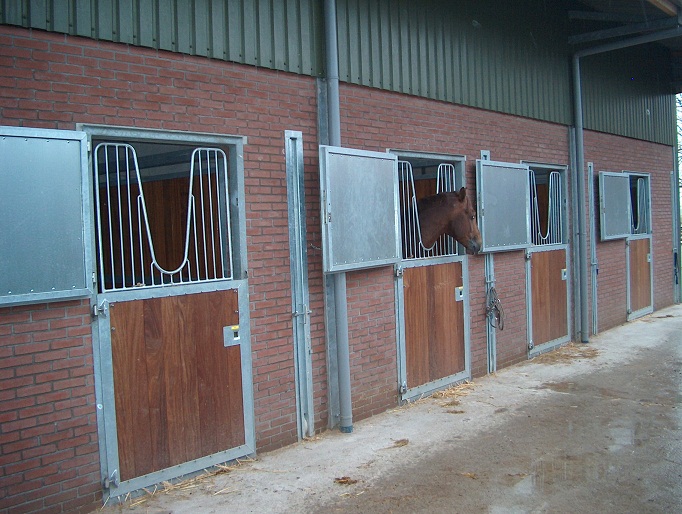
Blocks and Box Doors
Careful selection should be exercised when choosing box doors. There are those that revolve and those that slide. The swivel plus two leaves top and bottom, are the most commonly used abroad. Gantries are more functional but it is important that they should be suspended and adjustable. Convenience and security doors, if of the rotating type, should always open outwards. The tallest measure 1.20 X 2.30m. Door construction materials are not unimportant either; metal doors are economical but undesirable. They are hot in summer, cold in winter and very noisy, all of which encourages a horse to demand attention, with consequent discomfort and risk. Wood is aesthetically pleasant and a good insulator, but soft woods such as pine or spruce are easily damaged by the animals. Use of solid, galvanized metal frames and other materials such as polyethylene is widespread now, and has several advantages: polyethylene is economical, durable, slightly flexible and non-porous, washable by special devices to avoid dilation by the sun, and can be installed indoors.
Flooring for Stables
Types of floors for stabling have varied over the years. Formerly it was normal to make them with earth or pressed clay, relatively warm and impermeable and elastic. They would be mounted on a subsurface of draining gravel. Sand is used, but it must be cleaned regularly, and changed frequently. 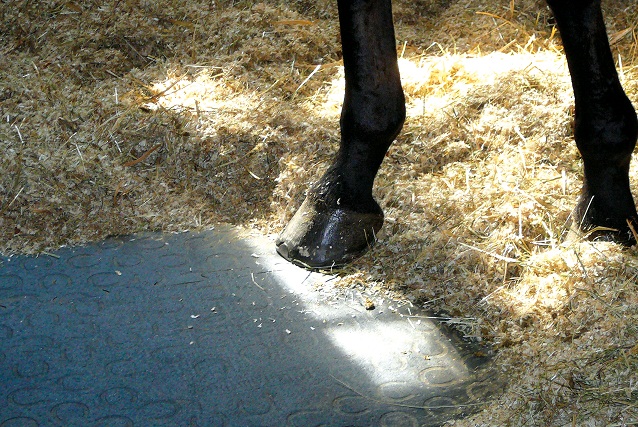 More recently concrete has been used, much easier to clean. But, concrete is cold and hard and potentially damp material. Rubber floors and modern BELMOND plates are waterproof, easy to install and safe because they do not slip, or allow moisture to gather by capillary rising. They are warm and provide a flexible surface. Rubber soil represents an added cost, but this must be balanced against longer daily use.
More recently concrete has been used, much easier to clean. But, concrete is cold and hard and potentially damp material. Rubber floors and modern BELMOND plates are waterproof, easy to install and safe because they do not slip, or allow moisture to gather by capillary rising. They are warm and provide a flexible surface. Rubber soil represents an added cost, but this must be balanced against longer daily use.
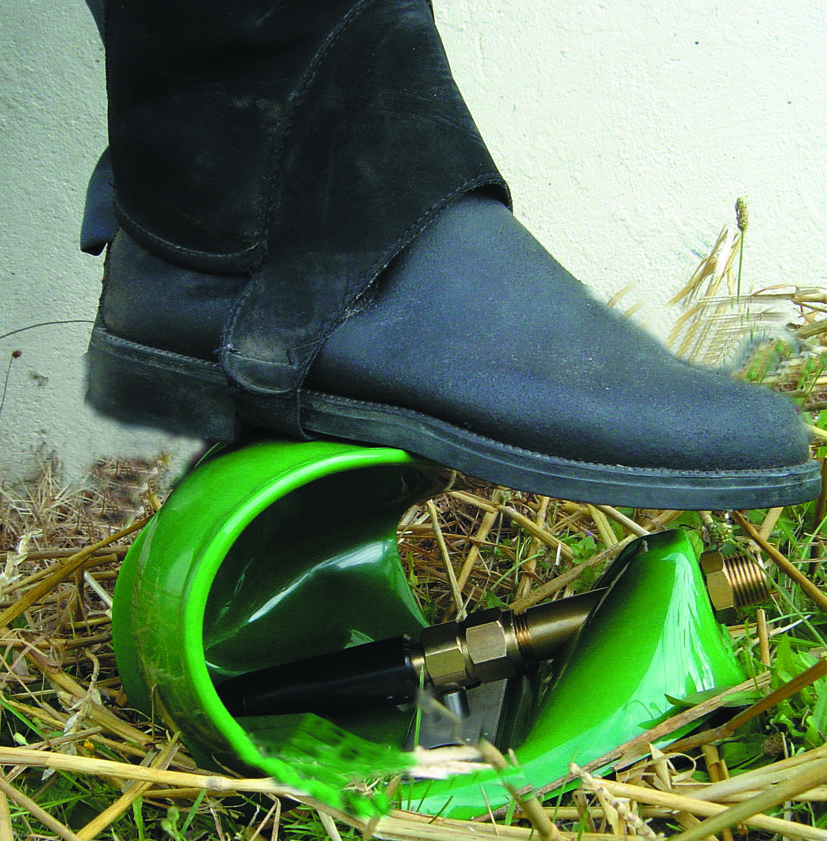 The use, placement and type of feeding, drinking and forage containers within the box is always controversial between professionals. Some prefer hay on the floor, getting the horse to drink at the trough. Based on our experience we think the best thing to do is to examine the multiple models and materials found in the market. Our advice is: buy feeders and automatic waterers specifically designed for horses. Place them at diagonal opposites, so that the animal after feeding needs as long as possible to reach the water container, leaving the smallest amount of grain possible in the mouth, because it will rot in the water, and the animal will not wish to drink it at either corner. If alfalfa is being used, give it a special place above the feeding trough, as the animal will pull at it, causing leaves to fall into other foods, all of which can be eaten later. The alfalfa feeder should have side rails to prevent leaves falling anywhere else but the food container. In all cases however, feeders and water trough should be inspected daily.
The use, placement and type of feeding, drinking and forage containers within the box is always controversial between professionals. Some prefer hay on the floor, getting the horse to drink at the trough. Based on our experience we think the best thing to do is to examine the multiple models and materials found in the market. Our advice is: buy feeders and automatic waterers specifically designed for horses. Place them at diagonal opposites, so that the animal after feeding needs as long as possible to reach the water container, leaving the smallest amount of grain possible in the mouth, because it will rot in the water, and the animal will not wish to drink it at either corner. If alfalfa is being used, give it a special place above the feeding trough, as the animal will pull at it, causing leaves to fall into other foods, all of which can be eaten later. The alfalfa feeder should have side rails to prevent leaves falling anywhere else but the food container. In all cases however, feeders and water trough should be inspected daily.
We hope that all this is of general interest; if you wish for more personal advice, please contact us.
